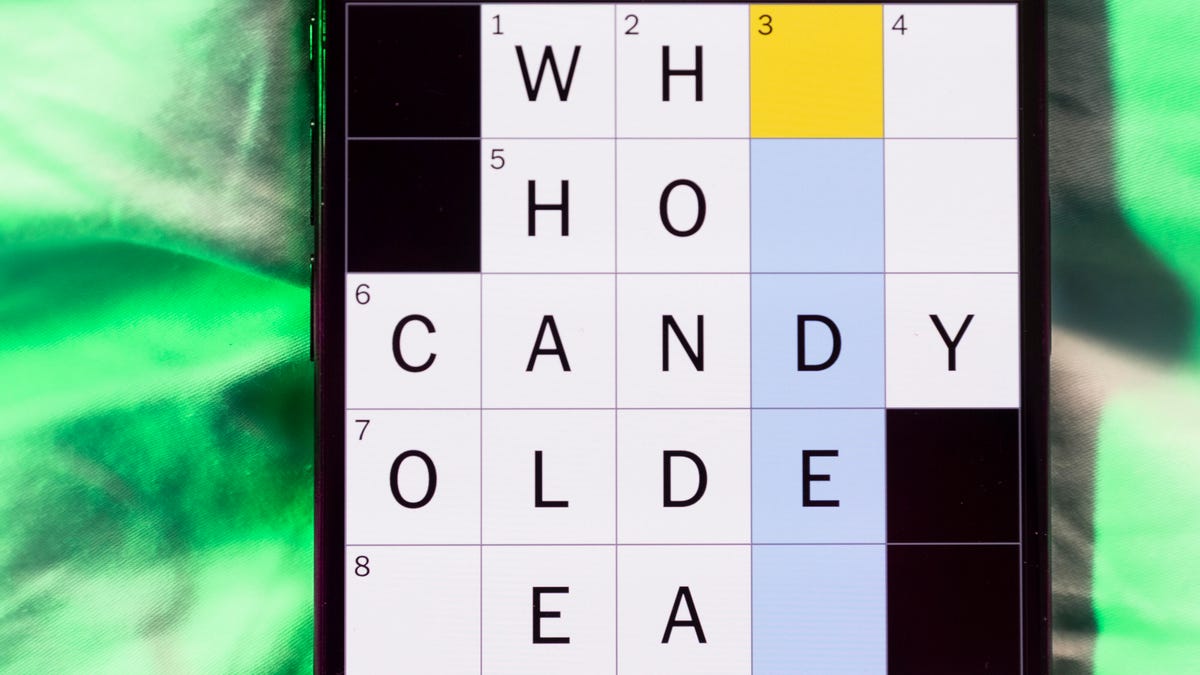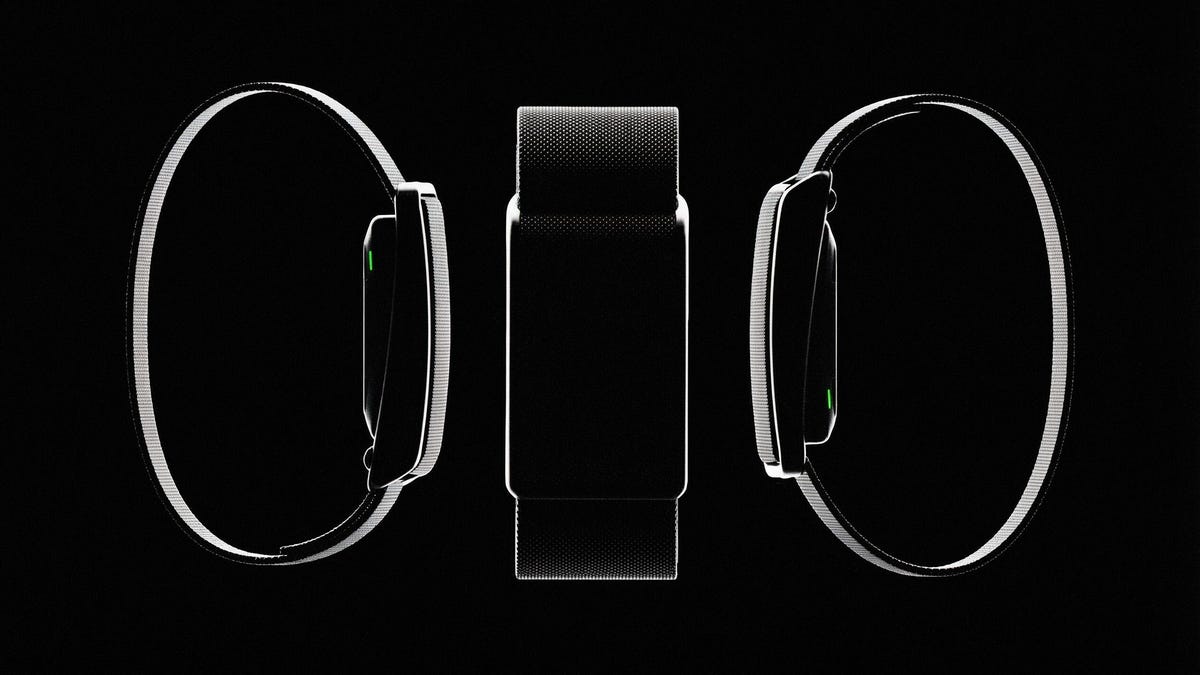Technologies
Sony’s Horizon Forbidden West Tree-Planting Program Feels Like a Publicity Stunt
Commentary: Play a game. Plant a tree. Save the planet? Not so fast.

Do you want to help heal the Earth’s forests from the comfort of your home? For $69.99 you can do just that! At least, that appears to be the promise of Sony’s Play and Plant program, announced on Tuesday.
The program sees the electronics and video game giant partner with the Arbor Day Foundation, a tree-planting non-profit, to plant 288,000 trees across three reforestation projects in the United States. The catch is real-world trees will only be planted once a player gets through the tutorial in Horizon: Forbidden West and unlocks a specific in-game trophy.
The program received a good deal of press coverage from major video games websites with one outlet suggesting the program allows you to «save the real Earth while you save the virtual one.» Another suggested players have «the chance to do tangible good for the Earth.» Comments have been largely positive, too, with many lauding Sony’s initiative.
«Bout to go so hard in this game in the name of climate restoration,» one tweeter said.
But a brief glance beyond the headlines reveals this is video games greenwashing at its worst.
Reforestation is an admirable goal and the Arbor Day Foundation, which claims to have planted 500 million trees in its 50-year history, is no slouch when it comes to getting seedlings in the ground. But Sony’s program gives the false impression that buying a full-priced AAA video game is the way to help fix the planet and helps cast the company’s environmental actions in a positive light. It equates purchasing Horizon with doing good for the planet — such a simplification is grating and when you weigh this against Sony’s corporate environmental impact, the trophy-for-trees idea seems almost ludicrous.
«It’s a very common, and very effective strategy for companies to direct our focus and attention onto end users and consumers to distract us from the lack of effort from corporations,» notes Ben Abraham, a sustainability researcher and consultant who has been analyzing the carbon footprint of the video game industry.
Sony has committed to a «zero environmental footprint» goal by 2050, but is still emitting almost 1.4 million tonnes of carbon dioxide from fossil fuel power alone, according to its 2021 sustainability report. The vast majority of this coming from energy used at Sony sites across the world.
The report also details how much carbon dioxide is emitted as a result of consumers using Sony products, like TVs and game consoles. In 2020, these emissions were 19% higher than the year prior — and the highest they’ve been since 2016.
This was, the company notes, due to an increase in average TV screen size and «strong sales of the newly released PlayStation 5.» The PS5 is one of the most energy-intense consoles ever built, which means simply playing Horizon: Forbidden West long enough to get the necessary trophy is actually generating carbon dioxide in the short-term.
Let’s do some quick, back-of-the-napkin math: Unlocking the trophy will take about two hours of play time. If Horizon uses the same amount of energy per hour that Spider-Man: Miles Morales does (and it’s likely to use more considering it’s a brand new game), then you’re looking at around 400 watts of power to unlock the trophy and plant one tree. This is about the same as charging your smartphone 35 times. Now scale that up to 288,000 players and you’ve emitted around 90 tons of carbon dioxide to plant the trees.
That’s not an extreme amount, but is it really necessary? And beyond the planting, there’s also the follow-up. «There needs to be guarantees that number of trees gets planted [and] those trees get cared for and don’t die,» explains David Ellsworth, an ecologist and forestry expert at Western Sydney University in Australia. The benefits of planting trees don’t come when you unlock the trophy, but years or decades into the future. Will Sony ensure the planted trees make it to adulthood?
The tree-planting program is not limited to the US. Sony’s also partnering up with organizations in the UK, France, Germany, New Zealand and Canada for other tree-planting projects with different goals for players to reach. For instance, in New Zealand, a street artist has created Horizon artwork and each social media share will result in one tree, with a goal of planting 1,000. And in Canada, Sony will donate one Canadian dollar to the World Wildlife Fund to rehabilitate seagrass for every copy of the game sold — but only up to $100,000.
Which brings up another point. The first game in the series, Horizon: Zero Dawn, sold over 20 million copies. Why not just donate to the organization anyway, regardless of how many copies are sold, how many trophies get unlocked, how far players progress through the game or how many social media shares a piece of art receives?
Look past the feel good headlines and tweets and you find little cause for celebration. Sony is making inroads into reducing its environmental impact but the pace of progress is slow. It could have immediate and lasting impacts on the environment by rapidly decarbonizing and shifting to renewable energy to power its facilities, for instance. Instead, Sony putting the onus on players: Go buy our game so we can plant more trees.
It doesn’t deserve a trophy for that.
I reached out to Sony to clarify how tree growth, development and maintenance would be handled and whether this will be followed up by Sony in the future. I also asked whether players will know, in-game, that the trophy has contributed to the Play and Plant program. Sony did not respond to our requests for comment.
Technologies
Today’s NYT Mini Crossword Answers for Thursday, Jan. 8
Here are the answers for The New York Times Mini Crossword for Jan. 8.

Looking for the most recent Mini Crossword answer? Click here for today’s Mini Crossword hints, as well as our daily answers and hints for The New York Times Wordle, Strands, Connections and Connections: Sports Edition puzzles.
Need some help with today’s Mini Crossword? I found 6-Across to be especially tricky. Read on for all the answers. And if you could use some hints and guidance for daily solving, check out our Mini Crossword tips.
If you’re looking for today’s Wordle, Connections, Connections: Sports Edition and Strands answers, you can visit CNET’s NYT puzzle hints page.
Read more: Tips and Tricks for Solving The New York Times Mini Crossword
Let’s get to those Mini Crossword clues and answers.
Mini across clues and answers
1A clue: Donate
Answer: GIVE
5A clue: Piece of equipment in curling or Quidditch
Answer: BROOM
6A clue: Tidbit of information
Answer: DATUM
7A clue: Prone to daydreaming
Answer: SPACY
8A clue: Athletic shorts fabric
Answer: MESH
Mini down clues and answers
1D clue: Flavor of a purple lollipop
Answer: GRAPE
2D clue: Greek letter I’s
Answer: IOTAS
3D clue: Go to bat (for)
Answer: VOUCH
4D clue: Award with Daytime and Primetime categories
Answer: EMMY
5D clue: Erotic practice in «Fifty Shades of Grey,» for short
Answer: BDSM
Don’t miss any of our unbiased tech content and lab-based reviews. Add CNET as a preferred Google source.
Technologies
New Foldable Phones Are Already Shaking Up the 2026 Smartphone Market
Commentary: Company announcements, analyst data and rumors of a foldable iPhone all point to an ambitious year for this still-young category.

What used to be a niche phone design is starting to flex its way into the mainstream. Foldable phones, which incorporate two or three panels that open into tablet configurations or condense down into compact sizes, are finding their audience. At CES 2026, for instance, Motorola announced its entry into with the book-style Razr Fold and Samsung showed off its Galaxy Z TriFold. Just as important, overall the category is seeing double-digit growth forecasts in 2026.
According to a December report from market research company IDC, global foldable phone shipments were expected to grow 10% in 2025 compared to 2024. And that number will continue to grow in 2026, with an expected 30% year-on-year jump, thanks to rumors of an upcoming foldable iPhone from Apple. And even though Samsung’s Flip and Fold phones have been around for years, the company’s newer TriFold and rumored «Wide Fold» have me hyped for what’s to come in 2026.
On the other hand, Huawei has led the way with innovative products, including its own trifold that beat Samsung to the category — the Huawei Mate XT — as well as a one-of-a-kind wide-screen flip phone, the Huawei Pura X. It dominated China’s foldable phones market with a massive 68.9% market share in the third quarter of 2025, according to a report from IDC (via MyDrivers). This is huge for a single brand in any market, especially when a niche category like foldables has several competitors (Oppo, Vivo, Xiaomi and more).
These new foldable phone styles, along with the rumored iPhone Fold from Apple — which is said to have a passport-size design — could mean we’ll see four different types of foldable phones by 2026, giving people more options for compact devices that unfold into larger screens.
The four kinds of foldable phones to expect in 2026
So far, the most popular foldable phones have been book-style (like the Galaxy Z Fold 7) and flip phones (like the Motorola Razr). While the former is a phone that unfolds into a mini-tablet, the latter folds into a more pocketable design. Both designs have their benefits, but if rumors are true, there are more ways to build a folding phone.
2026 will see two new designs in the category, and one of them has already been launched in several markets. Here’s why I think all these new foldable phones will have an audience.
Flip phones
The Galaxy Z Flip 7 and Motorola Razr lineups are built for those who want a compact phone without compromising on screen size. Not everyone has massive pockets in their jeans but that doesn’t mean they need to settle for a smaller screen. These flip phones are designed to be more pocketable while also offering the same 6.9-inch display as a regular slab phone.
Book-style foldables
The Samsung Galaxy Z Fold 7, Google Pixel 10 Pro Fold, Oppo Find N5 and Honor Magic V5 are all book-style foldables, which unfold to a mini-tablet. I like this design because I love browsing the web and reading on my phone and the squarish aspect ratio when unfolded makes it an excellent e-reader.
Recent developments in battery tech (silicon-carbon anode batteries) and hinge design have allowed manufacturers to shrink the crease depth and overall thickness to make them almost as slim as regular slab phones. These phones typically have big screens that aren’t ideal for videos, due to thick letterboxing. But they can be propped up by themselves, so you don’t need an external kickstand to watch 21:9 or 16:9 videos.
Book-style foldable phones are made for those of us who want to be more productive on a phone without needing a separate device.
The trifolds
This is the most versatile foldable phone design as of now and its best examples include the recently launched Samsung Galaxy Z TriFold and the Huawei Mate XT. However, not all trifolds are designed the same.
The Huawei trifold is the most versatile phone I’ve ever used, allowing me to use it as a phone, a mini tablet and a wide-screen 16:11 tablet for productivity and media consumption. It’s a true all-in-one device that delivers everything in a portable design.
By comparison, the Galaxy Z Trifold gives you a wide-screen 10-inch tablet that fits in your pocket and can also be used as a phone. It doesn’t offer a mini-tablet mode — you can use it either folded as a phone or fully unfolded — but Samsung’s trifold is designed as a productivity and media powerhouse. It’s essentially a flagship Galaxy Tab S-style device that fits inside your pocket.
Widescreen foldables
The Huawei Pura X is the best example of a wide-screen foldable so far. While some might argue that the first-generation Oppo Find N and Google Pixel Fold could fit under this category, their inner screens were also squarish (8.4:9 on the Oppo phone and 5:6 on the Pixel Fold); they were smaller book-style foldables.
In contrast, the Pura X has a 6.3-inch display with a wider 16:10 aspect ratio, which makes it an ideal screen for reading and watching videos. I used the phone recently for a few days and it’s the best combination of pockatability and versatility. You can watch videos with minimal letterboxing (thick black borders on top and bottom) on its 16:10 screen or use it like an e-reader in vertical orientation. And for the times when you need to snap some selfies using the rear cameras, you get a decent viewfinder in the form of a big cover screen — without making the phone unwieldy like book-style foldables.
Apple is rumored to adopt this approach with its upcoming iPhone Fold, but with a bigger cover screen. And Samsung is said to be developing a similar «Wide Fold» that’ll give you a 4:3 inner screen, too. According to a report from ETnews, this new Samsung foldable could have a 5.4-inch cover screen and support 25-watt wireless charging.
If the Korean company launches it alongside a presumed Galaxy Z Fold 8 and Flip 8, potentially in July 2026, it would launch ahead of Apple’s rumored foldable, which is presumed to launch in the fall.
While these foldable phones will likely be expensive — especially the newer trifold and wide fold shapes — they’re bringing a lot of new competition to a phone market that’s otherwise dominated by the candy bar shape. As we move into 2026, I’m looking forward to having multiple size, design and functionality options, much like we do with traditional phones.
Technologies
Speediance Unveils New Compact Resistance Trainer and Wearable
Speediance is aiming to make strength training more portable with a wearable unveiled at CES.

Speediance unveiled its new Gym Nano and Speediance Strap products this week at CES 2026. The smart fitness equipment manufacturer, which previously developed its own smart home gym, the Gym Monster 2, designed the Gym Nano and Speediance Strap to complement its current equipment ecosystem.
«Rather than developing products in isolation, we’re building a comprehensive training and health ecosystem that adapts to users’ real lives and empowers better decision-making over time,» Speediance founder and CEO Liu Tao said in a statement.
Speediance used the consumer tech expo in Las Vegas to demonstrate the Gym Nano, a portable, motor-driven cable resistance training system designed to occupy minimal space for those who prefer to work out at home. The strap is a prototype wearable device designed to read your health data and provide training recommendations based on this insight.
CNET previously tested Speediance’s VeloNix AI Smart Bike and named it the best AI-powered exercise bike.
Don’t miss any of our unbiased tech content and lab-based reviews. Add CNET as a preferred Google source.
Gym Nano
The Gym Nano is a compact digital cable resistance machine trainer that fits any space and delivers full-body workouts. It’s meant to make strength training at home easier if you have limited space and can’t commit to larger home gym equipment.
The Gym Nano offers up to 220 pounds of resistance through adjustable 1-pound increments. It also has five dynamic weight modes: Eccentric, Chain, Standard, Fixed Speed and Sled.
Speediance Strap
The Speediance Strap is a screen-free wearable that collects data related to your sleep, training and core body temperature. It then uploads and shares this data to the Speediance Wellness Plus app, where it makes suggestions for your daily training and recovery based on this information.
The strap can be used for both endurance and strength training activities and recognizes various types of exercises, movement patterns, training volume and other insights that can help you learn how well your body is responding to your training.
The Speediance Strap is a screen-free wearable that collects data related to your sleep, training and core body temperature. It then uploads and shares this data to the Speediance Wellness Plus app, where it makes suggestions for your daily training and recovery based on this information. Similar to other wearables, the Speediance Strap assesses your readiness each day and can detect stress factors to determine if you should focus more on recovery on that day.
«With Speediance Strap, we are exploring how wearable data can function as part of a decision-support layer within a connected fitness system, rather than existing as isolated metrics,» Tao said in a statement.
Additionally, everyday insights (like core and recovery data) will be free to you unless you want to upgrade to the Wellness Plus access, which will come at an additional cost to receive long-term insights and AI planning.
It’s unclear when the Gym Nano will be available for purchase, but the Speediance Strap is expected to launch through a Kickstarter campaign in spring 2026.
-

 Technologies3 года ago
Technologies3 года agoTech Companies Need to Be Held Accountable for Security, Experts Say
-

 Technologies3 года ago
Technologies3 года agoBest Handheld Game Console in 2023
-

 Technologies3 года ago
Technologies3 года agoTighten Up Your VR Game With the Best Head Straps for Quest 2
-

 Technologies4 года ago
Technologies4 года agoBlack Friday 2021: The best deals on TVs, headphones, kitchenware, and more
-

 Technologies4 года ago
Technologies4 года agoGoogle to require vaccinations as Silicon Valley rethinks return-to-office policies
-

 Technologies4 года ago
Technologies4 года agoVerum, Wickr and Threema: next generation secured messengers
-

 Technologies4 года ago
Technologies4 года agoOlivia Harlan Dekker for Verum Messenger
-

 Technologies4 года ago
Technologies4 года agoiPhone 13 event: How to watch Apple’s big announcement tomorrow
